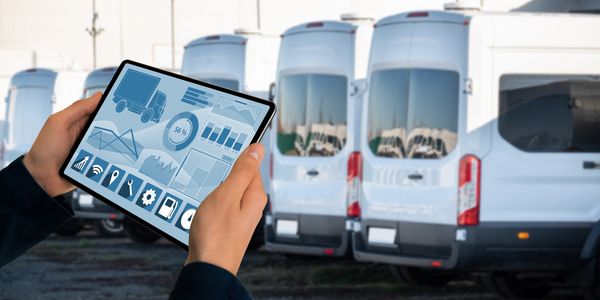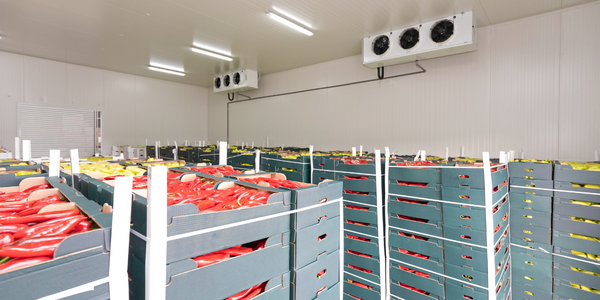Technology Category
- Sensors - GPS
Applicable Industries
- Transportation
Applicable Functions
- Logistics & Transportation
- Sales & Marketing
Use Cases
- Indoor Positioning Systems
- Last Mile Delivery
About The Customer
The customer in this case study is Pizza Hut Delivery, a branch of the well-known pizza brand, Pizza Hut. Despite being a much-loved pizza brand in the UK, Pizza Hut Delivery was less recognized for its delivery services due to its historic association with restaurants. The company wanted to elevate its brand and make sure everyone knows that Pizza Hut delivers. They also wanted to position themselves as a benchmark in delivery and compete effectively with their main competitor, Domino’s.
The Challenge
Despite being a well-known pizza brand in the UK, Pizza Hut was facing a challenge in its delivery sector. The brand was less recognized for its delivery services due to its historic association with restaurants. The challenge was to elevate the brand, their pizzas, and their customer experience, and to ensure that everyone knows that Pizza Hut delivers. The company also wanted to position itself as a benchmark in delivery, and to compete effectively with its main competitor, Domino’s.
The Solution
A new brand platform, 'Now That’s Delivering', was introduced to position Pizza Hut as a benchmark in delivery. The company chose to highlight five key messages: the choice and flexibility to enjoy delicious restaurant-quality pizza delivered to your home, its taste credentials, its Hut Rewards loyalty scheme, favourites from £5 value proposition, and its Thirty Minute Speed Guarantee. To promote these messages, 20-second spots were created for each message, along with a hero film that combined all five messages. The hero film was launched on Boxing Day 2018, supported by 20-second and 6-second films, on Facebook and YouTube as targeted, timely interventions to disrupt consumers’ Domino’s habit.
Operational Impact
Quantitative Benefit

Case Study missing?
Start adding your own!
Register with your work email and create a new case study profile for your business.
Related Case Studies.

Case Study
Airport SCADA Systems Improve Service Levels
Modern airports are one of the busiest environments on Earth and rely on process automation equipment to ensure service operators achieve their KPIs. Increasingly airport SCADA systems are being used to control all aspects of the operation and associated facilities. This is because unplanned system downtime can cost dearly, both in terms of reduced revenues and the associated loss of customer satisfaction due to inevitable travel inconvenience and disruption.

Case Study
IoT-based Fleet Intelligence Innovation
Speed to market is precious for DRVR, a rapidly growing start-up company. With a business model dependent on reliable mobile data, managers were spending their lives trying to negotiate data roaming deals with mobile network operators in different countries. And, even then, service quality was a constant concern.

Case Study
Digitize Railway with Deutsche Bahn
To reduce maintenance costs and delay-causing failures for Deutsche Bahn. They need manual measurements by a position measurement system based on custom-made MEMS sensor clusters, which allow autonomous and continuous monitoring with wireless data transmission and long battery. They were looking for data pre-processing solution in the sensor and machine learning algorithms in the cloud so as to detect critical wear.

Case Study
Cold Chain Transportation and Refrigerated Fleet Management System
1) Create a digital connected transportation solution to retrofit cold chain trailers with real-time tracking and controls. 2) Prevent multi-million dollar losses due to theft or spoilage. 3) Deliver a digital chain-of-custody solution for door to door load monitoring and security. 4) Provide a trusted multi-fleet solution in a single application with granular data and access controls.

Case Study
Vehicle Fleet Analytics
Organizations frequently implement a maintenance strategy for their fleets of vehicles using a combination of time and usage based maintenance schedules. While effective as a whole, time and usage based schedules do not take into account driving patterns, environmental factors, and sensors currently deployed within the vehicle measuring crank voltage, ignition voltage, and acceleration, all of which have a significant influence on the overall health of the vehicle.In a typical fleet, a large percentage of road calls are related to electrical failure, with battery failure being a common cause. Battery failures result in unmet service agreement levels and costly re-adjustment of scheduled to provide replacement vehicles. To reduce the impact of unplanned maintenance, the transportation logistics company was interested in a trial of C3 Vehicle Fleet Analytics.

Case Study
3M Gains Real-Time Insight with Cloud Solution
The company has a long track record of innovative technology solutions. For example, 3M helps its customers optimize parking operations by automating fee collection and other processes. To improve support for this rapidly expanding segment, 3M needed to automate its own data collection and reporting. The company had recently purchased the assets of parking, tolling, and automatic license plate reader businesses, and required better insight into these acquisitions. Chad Reed, Global Business Manager for 3M Parking Systems, says, “With thousands of installations across the world, we couldn’t keep track of our software and hardware deployments, which made it difficult to understand our market penetration.” 3M wanted a tracking application that sales staff could use to get real-time information about the type and location of 3M products in parking lots and garages. So that it could be used on-site with potential customers, the solution would have to provide access to data anytime, anywhere, and from an array of mobile devices. Jason Fox, Mobile Application Architect at 3M, upped the ante by volunteering to deliver the new app in one weekend. For Fox and his team, these requirements meant turning to the cloud instead of an on-premises datacenter. “My first thought was to go directly to the cloud because we needed to provide access not only to our salespeople, but to resellers who didn’t have access to our internal network,” says Fox. “The cloud just seemed like a logical choice.”







